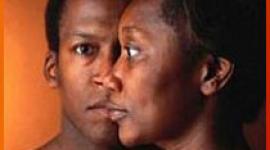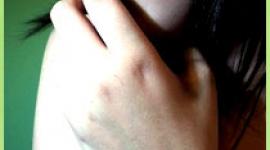Anxiety Disorders: Diagnostic Criteria
Diagnosis of an Anxiety Disorder
- DSM-IV Diagnoses and Criteria
- Syndromes: not disorders, but "building blocks for disorders" (like the "episodes" in mood disorders)
- Panic Attacks
- not a disorder, but a building block for other disorders
- multiple symptoms (4 or more:)
- palpitations, pounding heart or increased heart rate
- sweating
- trembling or shaking
- shortness of breath, smothering
- choking sensation
- chest pain
- nausea
- dizziness
- derealization (feelings of unreality) or depersonalization
- feeling of losing control/going crazy
- fear of dying
- paresthesias
- chills
- starts abruptly, peaks in about 10 minutes
- multiple symptoms (4 or more:)
- not a disorder, but a building block for other disorders
- Agoraphobia
- fear and avoidance of places/situations where one cannot escape.
- usually, the fear is that one might have a panic attack and be without help.
- fear and avoidance of places/situations where one cannot escape.
- Panic Attacks
- The Disorders
- Panic Disorder, with and without Agoraphobia
- recurrent Panic Attacks
- anticipatory anxiety around the attack
- "Global Criteria".
- Can be with or without Agoraphobia.
- Agoraphobia without History of Panic Disorder\
- Agoraphobia
- No panic disorder
- Not due to a medical/substance disorder
- Specific Phobia
- excessive fear of an object/situation
- avoidance of the object/situation or endurance with intense anxiety.
- "Global Criteria"
- Specific Types
- Animal Type
- Natural Environment Type (heights, storms, water)
- Blood-Injection-Injury Type
- Situational Type
- Other.
- Social Phobia
- Excessive fear of a social situation
- usually a fear of humiliation
- Has to meet "Global Criteria" (not just normal shyness)
- Typical: talking, eating, going to bathroom in public.
- can be generalized to most social situations.
- Differs From agoraphobia
- fear is of humiliation, in agoraphobia it is fear of being in a situation where you might be without help or escape.
- Excessive fear of a social situation
- Obsessive-Compulsive Disorder (OCD)
- either or both:
- obsessions
- intrusive thoughts, usually recognized as such.
- compulsions
- repetitive behaviors
- help to reduce anxiety (ex. washing hands to reduce fear of contamination).
- obsessions
- Good insight
- differentiates from a delusion
- "Global Criteria".
- either or both:
- Posttraumatic Stress Disorder (PTSD)
- 3 components:
- a traumatic situation occurred
- the trauma is reexperienced
- can range from recollections to nightmares or flashbacks
- Avoidance behavior, or numbing of general responsiveness
- Persistent symptoms of increased arousal
- Social/occupational dysfunction.
- Can be acute (< 3 months) or chronic.
- requires more than 1 month of symptoms
- 3 components:
- Acute Stress Disorder
- Like PTSD, but less than 1 month.
- Generalized Anxiety Disorder (GAD)
- This is the disorder for people who are chronically anxious.
- Excessive worry, more days than nights, for at least 6 months.
- Associated with at least 3 of these symptoms:
- restlessness
- fatigueability
- difficulty concentrating
- irritability
- muscle tension
- insomnia
- Anxiety Disorder Due to a General Medical Condition, and Substance-Induced Anxiety Disorder
- can demonstrate as generalized anxiety, panic attacks or OCD symptoms.
- or phobic symptoms in the case of substances
- can demonstrate as generalized anxiety, panic attacks or OCD symptoms.
- Panic Disorder, with and without Agoraphobia
- Syndromes: not disorders, but "building blocks for disorders" (like the "episodes" in mood disorders)
APA Reference
Staff, H.
(2007, February 19). Anxiety Disorders: Diagnostic Criteria, HealthyPlace. Retrieved
on 2025, December 19 from https://www.healthyplace.com/anxiety-panic/articles/anxiety-disorders-diagnostic-criteria
Last Updated: February 1, 2022



